How to Grow and Care for Hydrangeas, the Summer Showstoppers Every Gardener Should Plant
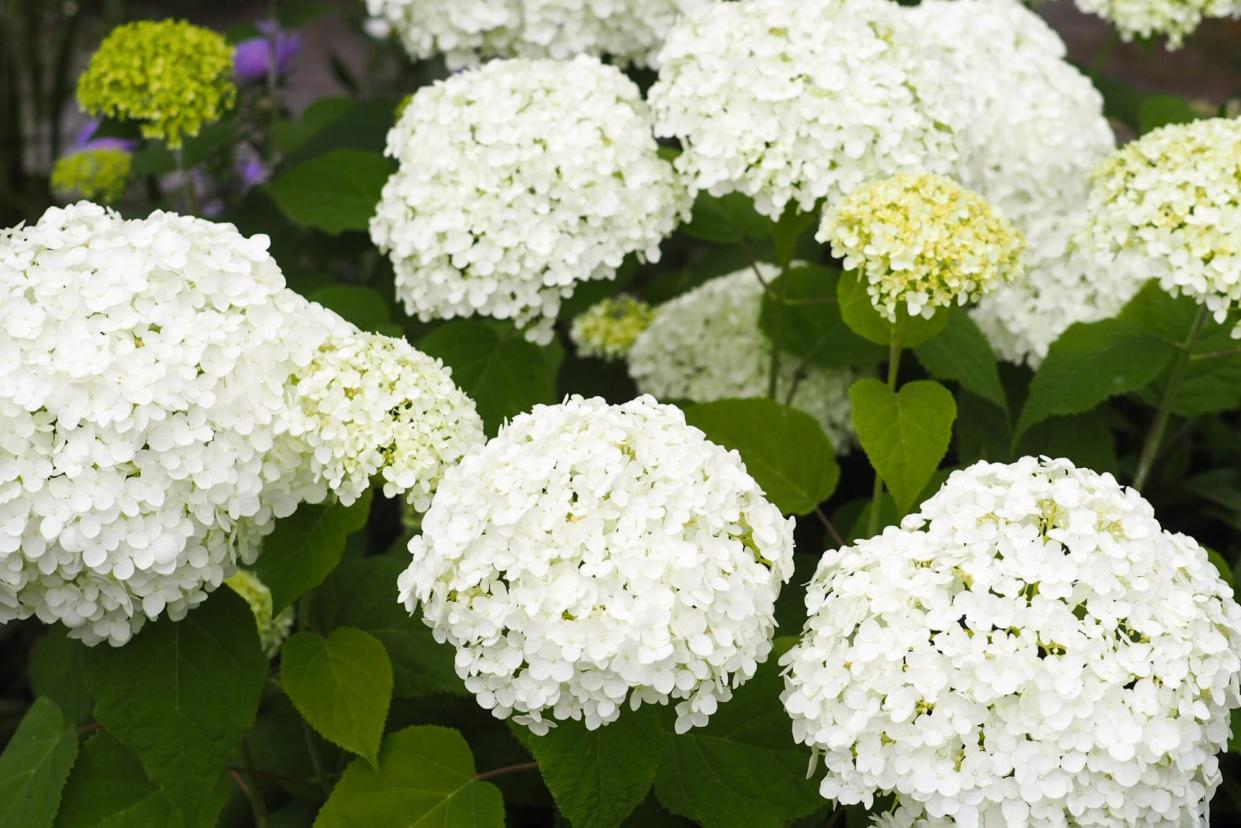
TABLE OF CONTENTS
On This Page
Planting
Care Tips
Pruning
Types of Hydrangeas
Propagating
Changing the Color of Hydrangea Flowers
Common Problems
Month-by-Month Care Guide
When the summer season peaks, we obsess over a highly-anticipated flowering shrub: hydrangeas. A diverse group of flowering woody shrubs, hydrangeas are beloved by gardeners for their showy blooms in a range of beautiful colors. As rapid growers—averaging about 2 feet of growth per year—larger varieties of hydrangeas can reach up to 15 feet tall. Applicable in growing zones 3 to 9, hydrangeas are a low maintenance plant that will return year after year with proper care.
Related: How to Prune Hydrangeas

GETTY IMAGES
How to Plant Hydrangeas
There are two measures you'll need to take prior to putting your hydrangea plant in the ground to ensure proper growth. "While your plant is in the nursery pot, give it a thorough watering, then select a location with appropriate sun or shade exposure for the variety," says Kip McConnell, plant expert for Southern Living Plant Collection.
Dig a hole two times the width of the pot, and plant 1 to 2 inches above the ground soil level.
Roughen sides of the hole with shovel to allow the roots to penetrate the sides and expand beyond the hole.
Remove plant from the pot and loosen or cut any circling roots
Set plant in the hole and backfill with existing soil.
Water the area thoroughly.
Cover the soil surface with 1 to 2 inches of mulch, avoiding the area closest to the stem to avoid fungal issues.
How to Care for Hydrangeas
Hydrangeas are an easy-to-care-for shrub that can successfully grow in zones 3 to 9. "With regular watering and some simple pruning if you'd like to shape or scale back your hydrangeas once a year, you can have bountiful blooms for months on end," says McConnell.
Light
The light requirement for hydrangeas will vary by species and variety, so be sure to reference the care tag prior to planting. Generally speaking, many varieties thrive in full sun to partial shade locations.
Soil
Hydrangeas prefer well-drained soil that has organic matter mixed in and adequate moisture. "Heavy soil can hold too much moisture, encouraging root rot, while soil that doesn't hold moisture can cause their roots to dry out," says McConnell. In areas with highly sandy soil or dense clay soil, add compost or other organic material such as shredded leaves, coffee grounds, or peat moss to the soil to balance it out.
Water
Hydrangeas are highly tolerant of certain kinds of living conditions, but they do have specific needs when it comes to water. As a general rule, newly planted hydrangeas should be watered every one to two days (or more during extreme heat and drought conditions). "Water in the morning before the sun has reached its peak, allowing the leaves and roots plenty of time to dry off before the sun sets," McConnell says. Once hotter months are behind you, hydrangeas should be watered deeply about two to three times per week.
Fertilizer
A general all-purpose fertilizer (look for a 10-10-10 or 12-4-8 ratio) will work well for hydrangeas. Apply a slow-release fertilizer twice per year in spring and early fall. "Apply widely around the drip line of the branches instead of the base of the plant, and cover lightly in soil," says McConnell.
Winterization
If you live in an area that experiences all four seasons, your hydrangeas will benefit from winter care. "Water well before the ground freezes, and apply a layer of compost to provide long-lasting nutrients that will sustain the plant through winter," says McConnell.
Next, protect vulnerable roots with a thick layer of mulch. Remove the heavier coat of mulch in spring after the last frost. When snow or ice is anticipated, protect the hydrangea's branches with a gentle cover made of breathable material, like cloth or burlap.
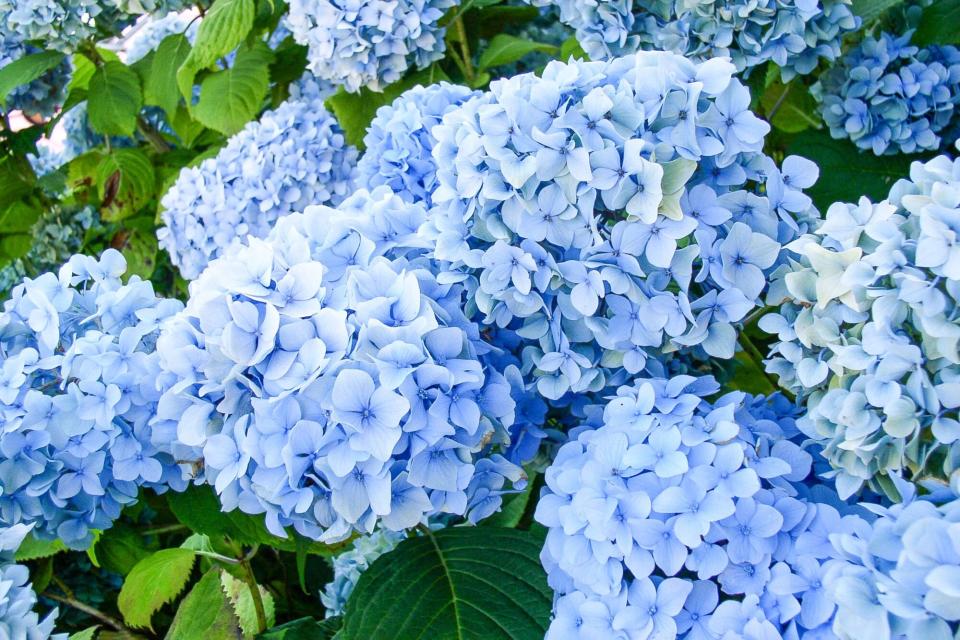
GETTY IMAGES
How to Prune Hydrangeas
Unlikely many plants, there is no one-size-fits-all approach when it comes to pruning hydrangeas. In order to understand its pruning needs, including when to prune them, it's crucial to know the type of hydrangea you're growing.
Old Wood
Certain species bloom on old wood, so their blooms develop on stems produced during the previous growing season. "Prune these varieties in summer, after they finish blooming to ensure that you don't remove new buds in spring before they bloom," says McConnell. Remove up to one-third of the stems, taking off the weakest shoots. Keep several stems of old productive wood and strong new stems, which will flower next season to encourage growth.
New Wood
Other species bloom on on new wood—the current year's new stems—and typically benefit from a pre-spring pruning. For these types of hydrangeas, it's best to cut stems back to the ground in late winter or early spring.
Types of Hydrangeas
As hydrangea care is so dependent on the variety you're growing, it's helpful to know a few of the most popular types.
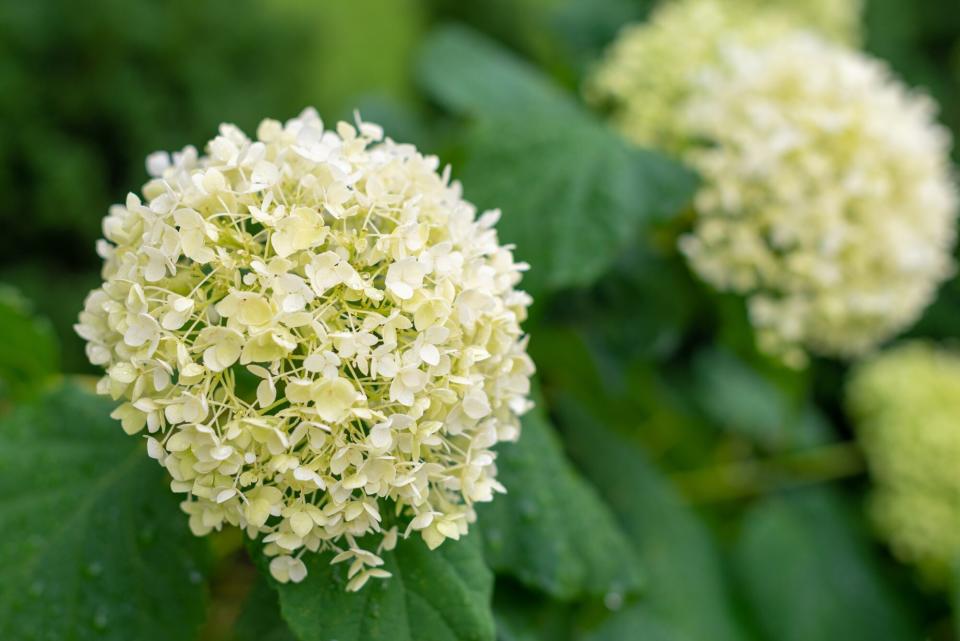
GETTY IMAGES
Hydrangea arborescens
Also known as smooth hydrangea, this variety is a rounded shrub with unbranched stems and round white flowers.
Size: 3 to 5 feet tall and wide
Zones: 4 to 9
Blooms on: New wood
Soil pH: Does not influence flower color
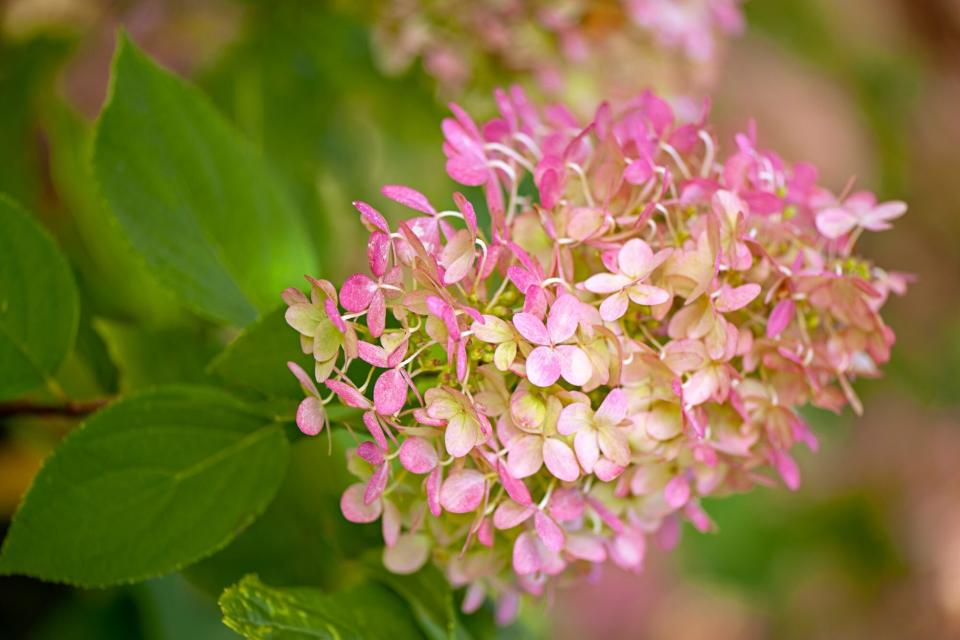
Jacky Parker Photography / GETTY IMAGES
Hydrangea paniculata
This variety, also referred to as panicle hydrangea, grows cone-shaped flowers that start out as white or lime green and fade to pink.
Size: 10 feet tall and wide
Zones: 3 to 8
Blooms on: New wood
Soil pH: Does not influence flower color

GETTY IMAGES
Hydrangea macrophylla
Commonly known as bigleaf hydrangea, this shrub is typically wider than it is tall. It flowers in milder areas in June with repeat bloomers appearing in mid summer.
Size: 3 to 6 feet tall and wide
Zones: 5 to 9
Blooms on: Old wood
Soil pH: Acidity influences flower color; blue flowers form in acidic soil and pink flowers form in alkaline soil.
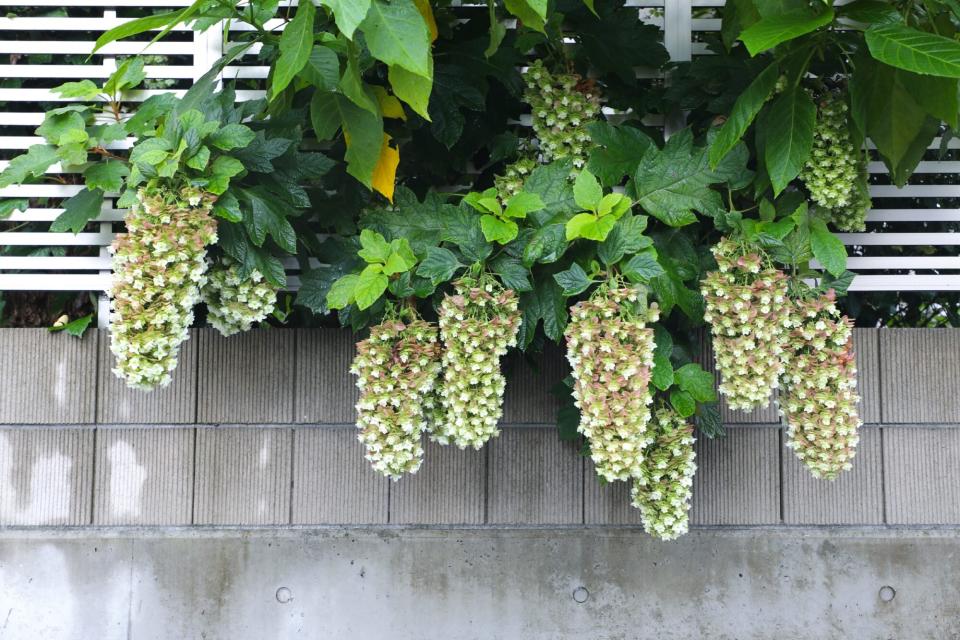
GETTY IMAGES
Hydrangea quercifolia
Known as oakleaf hydrangea, this variety provides multi-seasonal interest as its cone-shaped flowers fade to pink then brown.
Size: 8 feet tall and wide
Zones: 5 to 9
Blooms on: Old wood
Soil pH: Does not influence flower color
How to Propagate Hydrangeas
Timing is important when it comes to propagating hydrangeas. "For best success, head out on a spring morning and hunt for a handful of 6-inch cuttings with no flower buds and at least one node," says McConnell. It must include the note—the area where the current stem connects with another stem—because that's where new roots will grow from.
Take each cutting and dip the cut end into a hormone rooting powder, which can be purchased online.
Bury the end dipped in the powder in 2 to 3 inches below the surface of a pot of soil.
Place it in indirect light.
Keep soil lightly moist until roots develop in two to three weeks, at which time it will be ready to plant.
Keep in mind that some varieties cannot be propagated. "It is illegal to propagate patented plants," says Melinda Myers, gardening expert and host of the Great Courses How to Grow Anything DVD series. "This allows breeders to recoup their investment and keep introducing new plants for gardeners to enjoy. Check the pots and plant descriptions for patent numbers, trademarks or PPAFs prior to propagating."
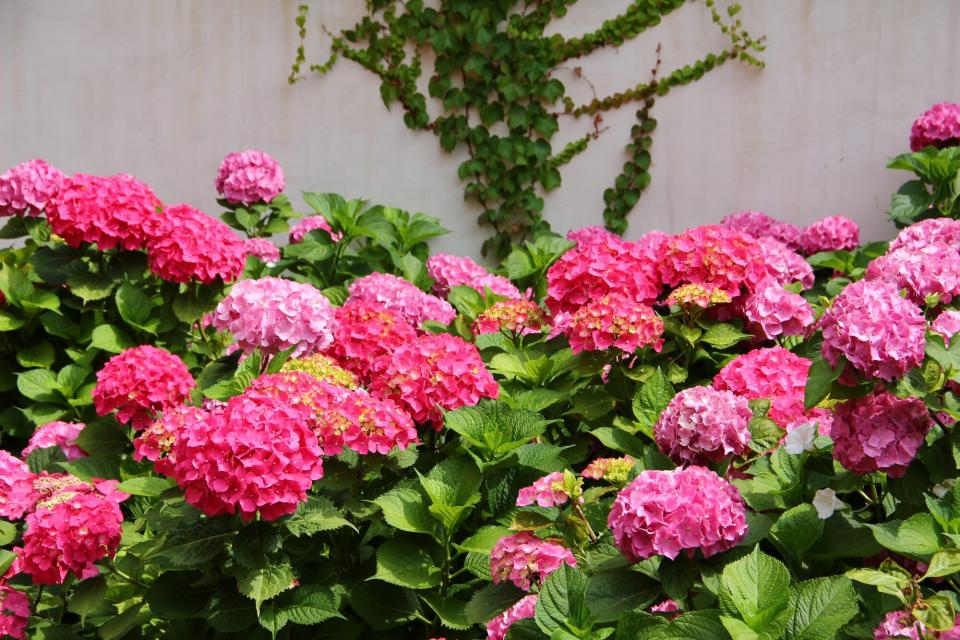
GETTY IMAGES
How to Change the Color of Hydrangeas
Adjusting the acidity or alkalinity in your soil can influence the color of your hydrangea blossoms. If you want to try this, start by checking the pH of your soil with a simple test kit available from your local nursery. For blue blooms, you need acidic soil (pH lower than 7), which can be achieved by adding sulfur or aluminum sulfate. For pink blooms, your soil must be alkaline (pH higher than 7), which can be achieved by adding lime to the earth.
Common Problems With Hydrangeas
Despite being easy to care for, there are a few common problems gardeners run into when growing hydrangeas.
Powdery Mildew
Powdery mildew is a common disease that plagues hydrangeas. "The white fungus blocks sunlight from reaching the leaves and in severe cases the leaves may yellow, brown and drop off," says Myers. Mildew formation is more common in shaded and over crowded areas.
To prevent future infections, reduce humidity and improve the plant's air circulation through pruning. Treat the disease with a fungicide labeled for this type of infection. "Start treating at first sign of the disease and repeat as recommended on product label," Myers says.
Bacterial Leaf Spot
Another disease hydrangeas are susceptible to is bacterial leaf spot. This is especially true for oakleaf and panicle varieties. "The disease presents as dark brown spots that appear to be wet with highly defined edges, appearing on both sides of the leaf as the tissue rots," says McConnell. Prevent it by improving circulation through pruning and avoid overly saturating your soil with water. The disease can be treated with copper bactericides, which can be found at nurseries and garden centers.
Aphids
An aphid infestation presents as yellowing or withering of the plant's leaves. "At first glance, no visible culprit may appear, but flipping over the leaves will reveal clusters of the tiny green or black pest beneath the leaves," McConnell says. "To treat for aphids, simply wash the leaves in an insecticidal soap or hit the affected leaves with a strong spray from a garden hose."
Beetles
Another pest that affects hydrangeas is beetles. "Several types of beetles may afflict hydrangeas, including Japanese beetles and rose chafer beetles," McConnell says. Start by identifying the type of beetle you're dealing with, which will determine your treatment plan.
For rose chafers and Japanese beetles, remove the bugs by hand and submerge the leaves in warm soapy water. Prevent future infestations by applying neem oil to the leaves.
Month-by-Month Hydrangea Care Guide
It can be hard to keep track of the monthly care requirements for hydrangeas. To help, we put together this monthly guide that lets you know when to fertilize, prune, and more.